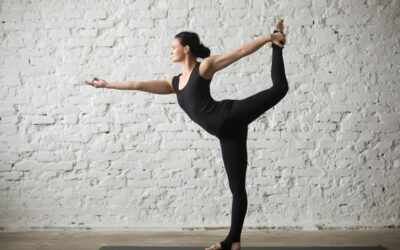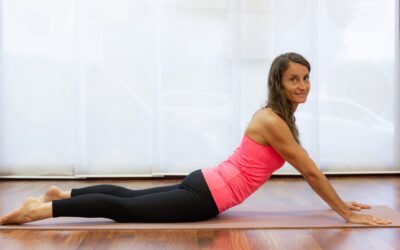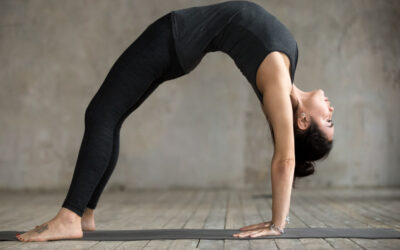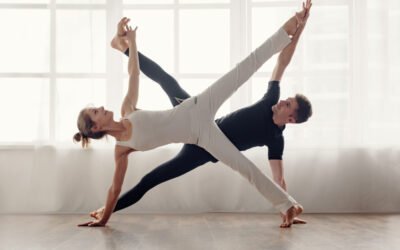Eka Pada Koundinyasana is a challenging and advanced yoga pose that requires strength, flexibility, and balance. This arm balance pose is named after the sage Koundinya, who is believed to have developed and practiced various yoga asanas.
Eka Pada Koundinyasana is characterized by a deep twist and a one-legged arm balance, making it a popular pose among experienced yogis looking to deepen their practice. In this introduction, we will explore the benefits, alignment cues, and variations of Eka Pada Koundinyasana, as well as provide tips for practicing and progressing in this pose.
benefits of Eka Pada Koundinyasana.
Eka Pada Koundinyasana is a challenging and empowering yoga asana that offers a multitude of benefits for the body, mind, and spirit. Here, we explore some of the advantages that practitioners can experience through the regular practice of Eka Pada Koundinyasana:
1. Strengthens the arms and shoulders.
Eka Pada Koundinyasana requires considerable upper body strength to support the body’s weight. As a result, regular practice of this pose helps to build strength in the arms, shoulders, and chest, contributing to better posture and overall upper body stability.
2. Tones the core muscles.
Maintaining balance and stability in Eka Pada Koundinyasana relies on engaging the core muscles, including the abdominal and lower back muscles. This pose strengthens and tones these muscles, leading to a more stable and balanced core, which is essential for maintaining a healthy spine and preventing lower back pain.
3. Enhances balance and coordination.
Balancing on one arm while extending one leg in Eka Pada Koundinyasana challenges and improves balance and coordination. Regular practice of this pose helps to train the body to find stability and equilibrium, leading to improved overall balance and coordination in various physical activities.
4. Increases flexibility and mobility.
Eka Pada Koundinyasana requires deep hip and hamstring flexibility to achieve the full expression of the pose. The regular practice of this asana helps to stretch and open the hips, hamstrings, and groin, increasing overall flexibility and range of motion in these areas.
5. Develops mental focus and concentration.
The intricate and complex nature of Eka Pada Koundinyasana demands intense mental focus and concentration. As practitioners strive to find balance and maintain the pose, they cultivate a sense of mindfulness, presence, and concentration. Over time, this enhanced mental focus can extend beyond the yoga mat, benefiting other aspects of life as well.
6. Boosts self-confidence and self-esteem.
Mastering Eka Pada Koundinyasana requires dedication, perseverance, and practice. As practitioners progress in their ability to hold and transition into this pose, they experience a boost in self-confidence and self-esteem. This newfound confidence extends beyond the physical practice, positively impacting other areas of life as well.
7. Promotes emotional well-being.
The physical challenges and the focus required in Eka Pada Koundinyasana help to release tension and stress from the body and mind. The deep breathing and mindful presence cultivated during this pose can promote a sense of calm, relaxation, and emotional well-being.
| 💡 Tips FreakToFit.com The practice of Eka Pada Koundinyasana offers a wide range of benefits, including increased strength, flexibility, balance, mental focus, and emotional well-being. Regular incorporation of this pose into a yoga practice can contribute to overall physical, mental, and spiritual growth. |
How to do Eka Pada Koundinyasana?
To successfully practice this pose, follow the steps below:
1. Warm-up: Begin your practice by warming up your body with a few rounds of Sun Salutations or any other dynamic flow that includes movements like lunges, twists, and forward folds. This will help prepare your muscles and joints for the intensity of Eka Pada Koundinyasana.
2. Start in Downward Facing Dog: From a tabletop position, lift your hips up and back, coming into Downward Facing Dog. Spread your fingers wide and press firmly through your palms, engaging your arms and shoulders.
3. Shift your weight forward: Slowly shift your weight forward, bringing your shoulders over your wrists. Keep your gaze slightly forward to help maintain balance.
4. Engage your core: As you shift your weight forward, engage your core muscles by drawing your navel towards your spine. This will help stabilize your body and create a solid foundation for the pose.
5. Bend your elbows: While maintaining the engagement in your core, begin to bend your elbows, lowering your upper body towards the ground. Keep your elbows hugged into your sides, pointing backward, rather than out to the sides.
6. Lift one leg: Once you have lowered your upper body, lift one leg off the ground, keeping it parallel to the floor. This leg will be the extended leg in Eka Pada Koundinyasana. Make sure to engage your glutes and quadriceps to help lift and hold the leg.
7. Hook the extended leg: Bend the extended leg at the knee and hook it over the upper arm on the same side. The knee should be positioned as high up on the arm as possible, closer to the armpit.
8. Find your balance: Shift your weight forward and lean into your hands while simultaneously engaging your core and squeezing your extended leg against your upper arm. This will help you find your balance in the pose.
9. Extend the other leg: Once you feel stable, slowly begin to extend the other leg straight back behind you. Keep the leg active and engaged, pointing the toes towards the ceiling.
10. Maintain steady breath and focus: As you hold the pose, maintain steady breath, inhaling and exhaling deeply. Focus your gaze on a fixed point to help improve concentration and balance.
11. Release the pose: To come out of Eka Pada Koundinyasana, slowly lower the extended leg back down to the ground, followed by the bent leg. Press through your hands to lift your upper body back up, coming into Downward Facing Dog or any other comfortable resting pose.
| 💡 Tips FreakToFit.com Remember, practicing Eka Pada Koundinyasana requires patience and perseverance. It may take time to build the strength and flexibility necessary for this pose, so be kind to yourself and listen to your body. Always practice under the guidance of a qualified yoga instructor if you’re new to arm balances or have any existing injuries. |
Eka Pada Koundinyasana Variations.
There are several variations of Eka Pada Koundinyasana that challenge different aspects of the body and deepen the practice. These variations include:
1. Eka Pada Koundinyasana I.
In this variation, the practitioner starts in a low lunge position with the right leg forward. The hands are placed on the ground, shoulder-width apart, and slightly in front of the right foot. The right shoulder is then hooked under the right thigh, while the left leg extends straight out to the side. The weight is shifted onto the hands as the left foot lifts off the ground, and the body becomes parallel to the floor.
2. Eka Pada Koundinyasana II.
This variation starts in a similar way to the first one, but instead of extending the left leg straight out to the side, it is lifted upward. The left foot reaches towards the ceiling, creating a vertical line with the body. This variation requires increased core strength and balance.
| 💡 Tips FreakToFit.com These Eka Pada Koundinyasana variations not only provide a challenging physical practice but also help to cultivate mindfulness, body awareness, and mental focus. They can be incorporated into a well-rounded yoga practice to enhance strength, flexibility, and overall body control. |
Bottom Line.
Eka Pada Koundinyasana is a challenging and advanced yoga pose that requires strength, flexibility, and focus. It offers numerous physical and mental benefits, including increased core strength, improved balance, enhanced concentration, and a sense of accomplishment.
However, it is important to approach this pose with caution, listen to your body, and work towards it gradually to avoid injury. With consistent practice, patience, and determination, one can eventually master Eka Pada Koundinyasana, experiencing the joy and fulfillment that come with achieving a challenging yoga pose.

 Workout
Workout
 Meditation
Meditation


 Stories
Stories


 Podcast
Podcast E-book
E-book











